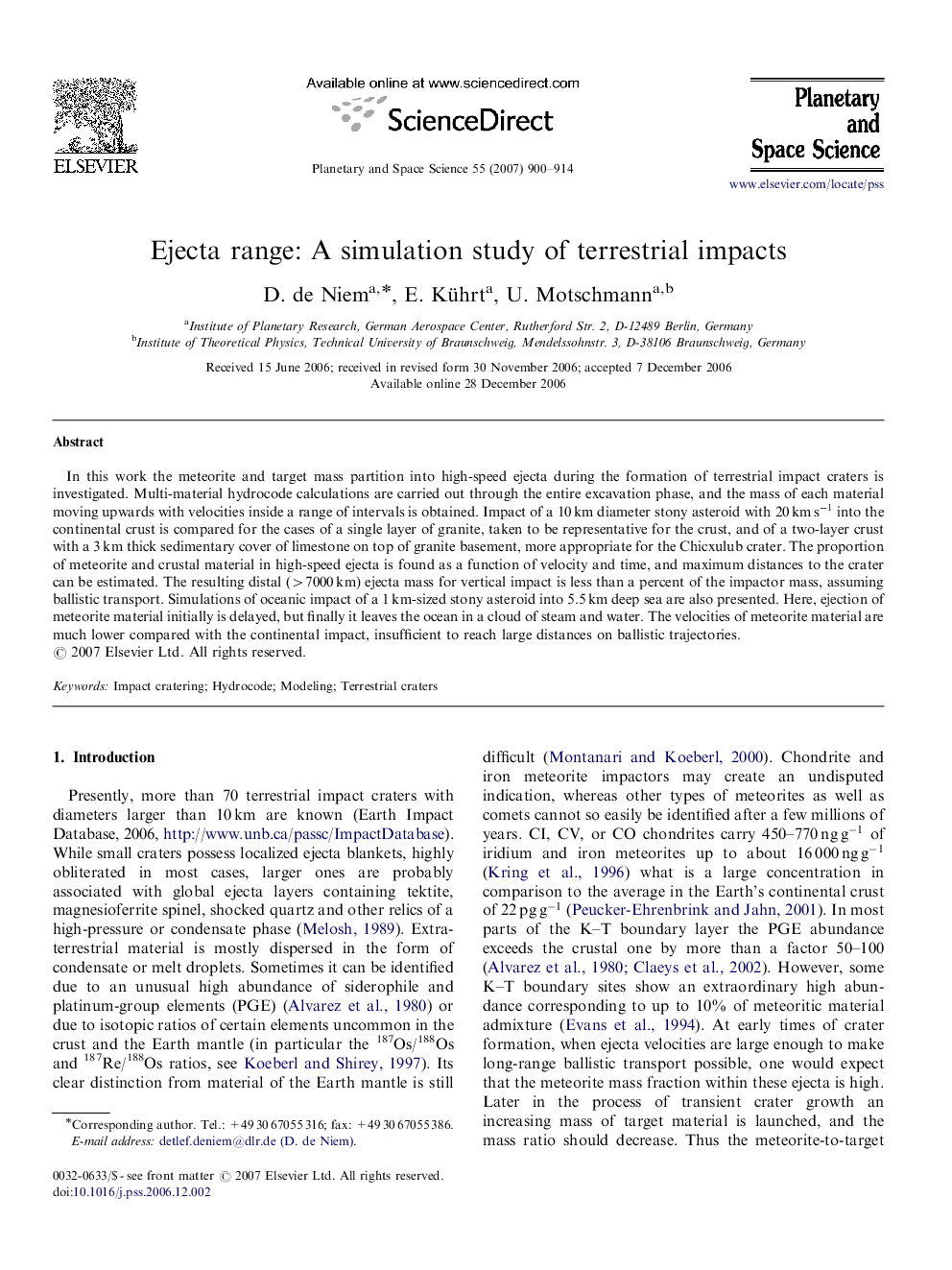| Article ID | Journal | Published Year | Pages | File Type |
|---|---|---|---|---|
| 1782206 | Planetary and Space Science | 2007 | 15 Pages |
In this work the meteorite and target mass partition into high-speed ejecta during the formation of terrestrial impact craters is investigated. Multi-material hydrocode calculations are carried out through the entire excavation phase, and the mass of each material moving upwards with velocities inside a range of intervals is obtained. Impact of a 10 km diameter stony asteroid with 20kms-1 into the continental crust is compared for the cases of a single layer of granite, taken to be representative for the crust, and of a two-layer crust with a 3 km thick sedimentary cover of limestone on top of granite basement, more appropriate for the Chicxulub crater. The proportion of meteorite and crustal material in high-speed ejecta is found as a function of velocity and time, and maximum distances to the crater can be estimated. The resulting distal (>7000km) ejecta mass for vertical impact is less than a percent of the impactor mass, assuming ballistic transport. Simulations of oceanic impact of a 1 km-sized stony asteroid into 5.5 km deep sea are also presented. Here, ejection of meteorite material initially is delayed, but finally it leaves the ocean in a cloud of steam and water. The velocities of meteorite material are much lower compared with the continental impact, insufficient to reach large distances on ballistic trajectories.
